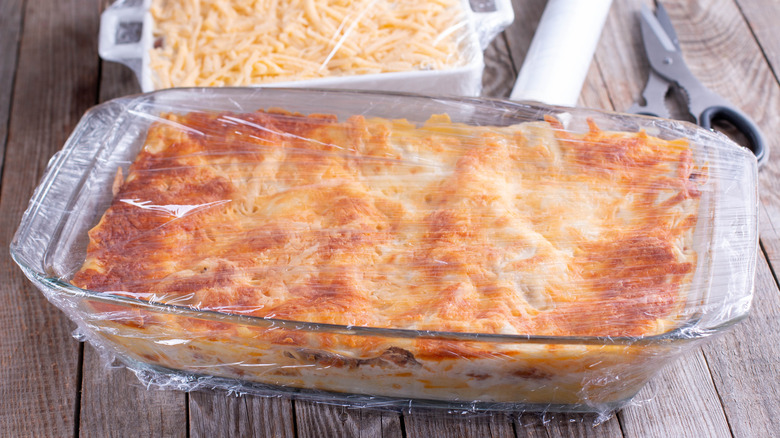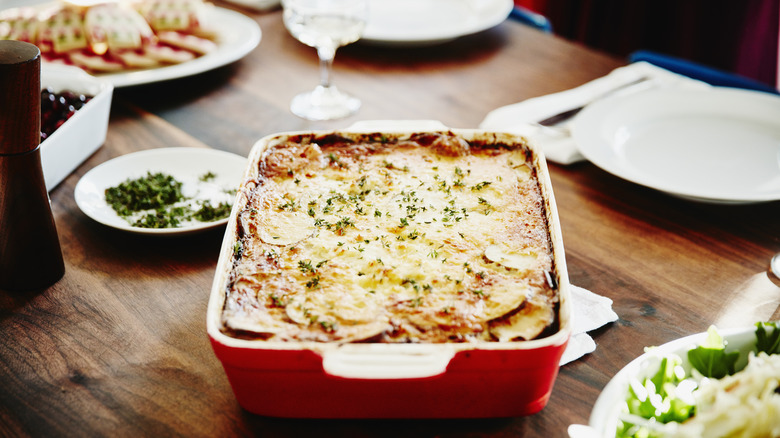How To Reheat A Whole Frozen Casserole
Tasty, comforting casseroles are a timeless hero for family meals. A big part of their beauty is they're ideal for making ahead of time and freezing for whenever you need dinner in a pinch. Of course, that key benefit is only valid if you know exactly how to reheat a frozen casserole. After making the casserole itself, reheating is the most important step to get right to ensure food safety as well as optimal flavors and textures.
There are two approaches to reheating a frozen casserole: One is to completely let it thaw before baking, the other is to transfer it right into the oven. The former technique aims to avoid stubborn ice spots in the middle of the casserole. The latter, however, is an even better way to go. When a casserole thaws, the resulting liquid has nowhere to go but down, pooling at the pan's base and creating a mushy bottom. The trick for avoiding that mush while also preventing an uneven bake is to put the frozen casserole directly into the oven and bake it for twice as long as the original recipe required, at the same temperature. Cover it with foil (and removing it for about the last 15 minutes) so it doesn't burn, and make sure the casserole's internal temperature has reached 165 degrees Fahrenheit before taking it out. Always let the reheated casserole sit for about 20 minutes before serving so the ingredients firm up and it's easy to cut.
What types of casseroles can be successfully reheated
Even your best reheating efforts could take a wrong turn without proper freezing first. Always cool the casserole before freezing, which you can do quickly with an ice bath, or simply by using a wider, shallower dish so there's more surface area and heat escapes faster. If you place a hot casserole right into the freezer you could risk bacterial growth on the food. Make sure to tightly cover the casserole, too.
Remember there are certain types of casserole you shouldn't freeze, meaning they're not good candidates for reheating. Starchy vegetables plus more moisture-dense ones like cucumbers or leafy greens have all this water that turns into ice chunks in the freezer, then evaporates as steam in the oven, creating a soggy, grainy reheated casserole. Eggs and dairy won't fare well, either. Instead, for cheese additions, sprinkle the layer onto the frozen casserole right before reheating. As for meats, those are the biggest differentiators of what casseroles you bake at all before freezing: Raw meats must be baked first, pre-cooked meats don't have to be. If you have the latter, or a meatless casserole, don't bake it before freezing so you can then heat it without fears of textural changes. Green bean casseroles reheat well, as would sweet carrot casserole, chicken casserole with cream of mushroom soup, beef and drop biscuit casserole, and corn and black bean Mexican casserole, with the cheese added before the reheat.

